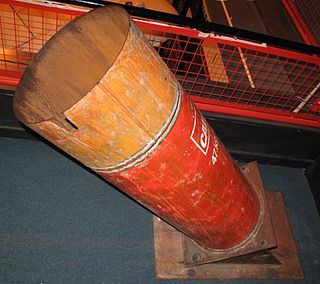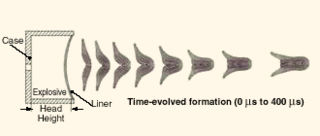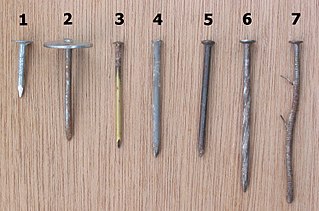 W
WAn improvised explosive device (IED) is a bomb constructed and deployed in ways other than in conventional military action. It may be constructed of conventional military explosives, such as an artillery shell, attached to a detonating mechanism. IEDs are commonly used as roadside bombs.
 W
WBarrack buster is the colloquial name given to several mortars, developed in the 1990s by the engineering group of the Provisional Irish Republican Army (IRA).
 W
WA barrel bomb is an improvised unguided bomb, sometimes described as a flying IED. They are typically made from a large barrel-shaped metal container that has been filled with high explosives, possibly shrapnel, oil or chemicals as well, and then dropped from a helicopter or aeroplane. Due to the large amount of explosives, their poor accuracy, and indiscriminate use in populated civilian areas, the resulting detonations have been devastating. Critics have characterised them as weapons of terror and illegal under international conventions.
 W
WA car bomb, lorry bomb, or truck bomb, also known as a vehicle-borne improvised explosive device (VBIED), is an improvised explosive device designed to be detonated in an automobile or other vehicles.
 W
WCounter-IED efforts are done primarily by military and law enforcement with the assistance of the diplomatic and financial communities. It involves a comprehensive approach of countering the threat networks that employ improvised explosive devices (IEDs), defeating the devices themselves, and training others. Counter-IED, or C-IED, is usually part of a broader counter-terrorism, counter-insurgency, or law enforcement effort. Because IEDs are a subset of a number of forms of asymmetric warfare used by insurgents and terrorists, C-IED activities are principally against adversaries and not only against IEDs. C-IED treats the IED as a systemic problem and aims to defeat the IED threat networks themselves.
 W
WAn improvised explosive device (IED) is a bomb constructed and deployed in ways other than in conventional military action. It may be constructed of conventional military explosives, such as an artillery shell, attached to a detonating mechanism. IEDs are commonly used as roadside bombs.
 W
WA dry ice bomb is a simple explosive device. While its simplicity, ease of construction, high bursting pressure and sound make it appealing for recreational purposes, it can be unpredictable and dangerous, and it has led to many injuries. Dry ice bombs are illegal in many jurisdictions.
 W
WAn explosive belt is an improvised explosive device, a belt or a vest packed with explosives and armed with a detonator, worn by suicide bombers. Explosive belts are usually packed with ball bearings, nails, screws, bolts, and other objects that serve as shrapnel to maximize the number of casualties in the explosion.
 W
WAn explosively formed penetrator (EFP), also known as an explosively formed projectile, a self-forging warhead, or a self-forging fragment, is a special type of shaped charge designed to penetrate armor effectively. As the name suggests, the effect of the explosive charge is to deform a metal plate into a slug or rod shape and accelerate it toward a target. They were first developed as oil well perforators by American oil companies in the 1930s, and were deployed as weapons in World War II.
 W
WThe double cylinder, Nos. 8 and No. 9 hand grenades, also known as the "jam tins", are a type of improvised explosive device used by the British and Commonwealth forces, notably the Australian and New Zealand Army Corps (ANZAC) in World War I. The jam tin, or bully beef tin, was one of many grenades designed by ANZACs in the early part of the First World War in response to a lack of equipment suited to trench warfare.
 W
WThe Joint Improvised-Threat Defeat Organization (JIDO) is a combat support organization of the U.S. Department of Defense (DoD) organization under the Defense Threat Reduction Agency (DTRA) that deals with improvised threats such as the improvised explosive device (IEDs) and small unmanned aerial systems (sUASs). JIDO was born from the Joint IED Defeat Organization (JIEDDO) established in 2006, which focused on IEDs. JIDO's mission is to "enable Department of Defense actions to counter improvised threats with tactical responsiveness and anticipatory acquisition in support of combatant commanders' efforts to prepare for, and adapt to, battlefield surprise." This mission supports counter-terrorism, counter-insurgency and other related mission areas including Counter-IED.
 W
WA letter bomb, also called parcel bomb, mail bomb, package bomb, note bomb, message bomb, gift bomb, present bomb, delivery bomb, surprise bomb, postal bomb, or post bomb, is an explosive device sent via the postal service, and designed with the intention to injure or kill the recipient when opened. They have been used in terrorist attacks such as those of the Unabomber. Some countries have agencies whose duties include the interdiction of letter bombs and the investigation of letter bombings. The letter bomb may have been in use for nearly as long as the common postal service has been in existence, as far back as 1764.
 W
WA lob bomb is a rocket-fired improvised explosive device made from a large metal canister, which has been used by insurgents as well as the Iraqi military during the Iraq War since late 2007. The weapon is essentially an airborne version of an improvised explosive device.
 W
WA Molotov cocktail, also known as a petrol bomb, gasoline bomb, bottle bomb, poor man's grenade, fire thing, fire bottle or just Molotov, sometimes shortened as Mona, is a generic name used for a variety of bottle-based improvised incendiary weapons.
 W
WA nail bomb is an anti-personnel explosive device containing nails to increase its effectiveness at harming victims. The nails act as shrapnel, leading almost certainly to greater loss of life and injury in inhabited areas than the explosives alone would. A nail bomb is also a type of flechette weapon. Such weapons use bits of shrapnel to create a larger radius of destruction.
 W
WA pipe bomb is an improvised explosive device which uses a tightly sealed section of pipe filled with an explosive material. The containment provided by the pipe means that simple low explosives can be used to produce a relatively large explosion due to the containment causing increased pressure, and the fragmentation of the pipe itself creates potentially lethal shrapnel.
 W
WA pressure cooker bomb is an improvised explosive device (IED) created by inserting explosive material into a pressure cooker and attaching a blasting cap into the cover of the cooker.
 W
WA propane bomb is a type of improvised explosive device which uses commercially available bottled gas cylinders, a kind of BLEVE. The devices have been used in terror attacks and school bombing plots.
 W
WRoute clearance is a routine part of counter-IED efforts performed by military forces around the world. The purpose of route clearance is to secure an important route and render it for safe transport. This mission relies on the use of Sapper and EOD forces to accomplish this task. Although mines have been used in warfare for years, the rise of IEDs in current conflicts has led to the development of the current route clearance doctrine.
 W
WA tilt fuze or fuse is a device usually used in the operation of car bombs and other such detonators, relying on the force of a jerk or similar movement for the triggering of the desired explosion.
 W
WA time bomb is a bomb whose detonation is triggered by a timer. The use of time bombs has been for various purposes including insurance fraud, terrorism, assassination, sabotage and warfare. They are a popular feature in fictional thriller and action films as they offer a way of imparting a dramatic sense of urgency.